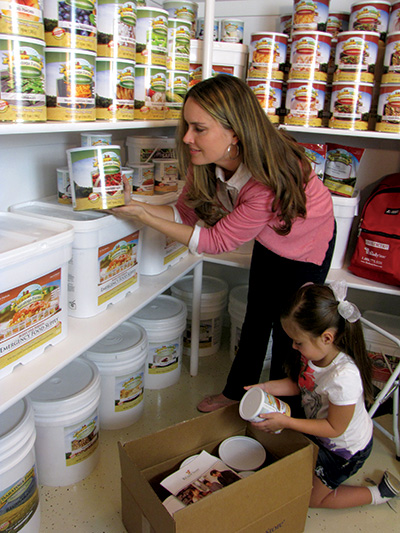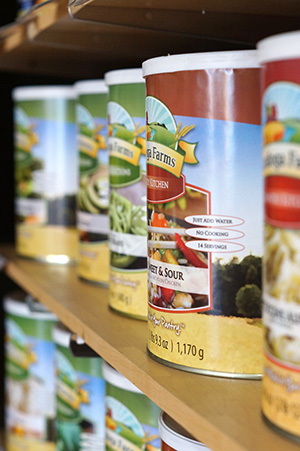Learn how to store your emergency food effectively with these best practices for containers and storage conditions.

Introduction
One of the biggest questions with food storage is, “Where should I store this?” Where you store your food significantly impacts how long it will last and how good it will taste when you use it. The type of container and the storage conditions play a crucial role in maintaining the food's quality. Below, we outline essential tips for food storage containers and the conditions you should consider. Let’s get started!
Containers for Food Storage
There are three primary types of packaging for typical food storage: Mylar pouches, metal cans, and plastic containers. Each has slightly different impacts on shelf life and storage requirements.
Cans
Commonly known as #10 cans, these containers often use oxygen absorbers to extend shelf life. This method of storage offers the longest shelf life for dry foods (10-30 years). However, carefully check the can's seams as faulty seams pose the primary threat to long-term food quality.1

Pouches
High-quality Mylar pouches can preserve food for 15-25 years due to their excellent oxygen barrier. Thicker bags, oxygen absorbers, and proper storage combine to create an effective, lightweight system for long-term storage.
Large Buckets
Buckets are excellent for holding large amounts of food, keeping out light and odors. The most effective method involves using Mylar bagging inside the bucket. This combination is proven to be one of the best for long-term food preservation.
Jars
While not as commonly used commercially, glass jars remain a popular option for DIY food storage. As long as the jars are airtight and properly cleaned, they can be an effective storage solution. Keep them in the dark to prevent light exposure from degrading the food.
Oxygen Absorbers
Oxygen removal is essential for preserving flavor, preventing rancidity, maintaining nutrition, and preventing infestations. Historically, two methods have been used to remove oxygen:
- Nitrogen Flushing: A difficult process of expelling oxygen by flushing containers with nitrogen. However, it can negatively impact food flavor.2
- Oxygen Absorbers: The preferred method involves placing oxygen absorbers inside storage containers, where they remove oxygen through a chemical reaction. This method is more reliable and maintains food quality.3

Storage Conditions
When choosing a place to store your food, prioritize locations that are dry, dark, and cool. Focus on two main factors: moisture and temperature. Additionally, be mindful of light levels, air circulation, and infestations. Here's what you need to know:
Moisture
Moisture is the top enemy of safe food storage. It promotes microorganism growth and degrades food value. Avoid storing food directly on the ground and ensure that storage areas are dry to prevent spoilage from humidity.
Temperature
Consistency and coolness are key. Store food in areas where the temperature doesn’t fluctuate significantly, avoiding places like garages or attics. Keep food away from heat sources like furnaces or refrigerators. Ideal storage temperatures should be below 70°F.4
Light
Direct sunlight accelerates food spoilage, destroys nutrients, and raises storage temperatures. Use containers that block light, such as plastic or Mylar bags.5
Infestations
Insect and vermin infestations occur when storage conditions are compromised. Keeping food dry, cool, and sealed reduces the risk of infestations and ensures it stays safe for you and your family.
Conclusion
For optimal food storage, look for well-sealed products with oxygen absorbers and protective barriers from light and odors. Store your food in a cool, dry, and dark location with consistent temperatures to preserve quality and extend shelf life.










